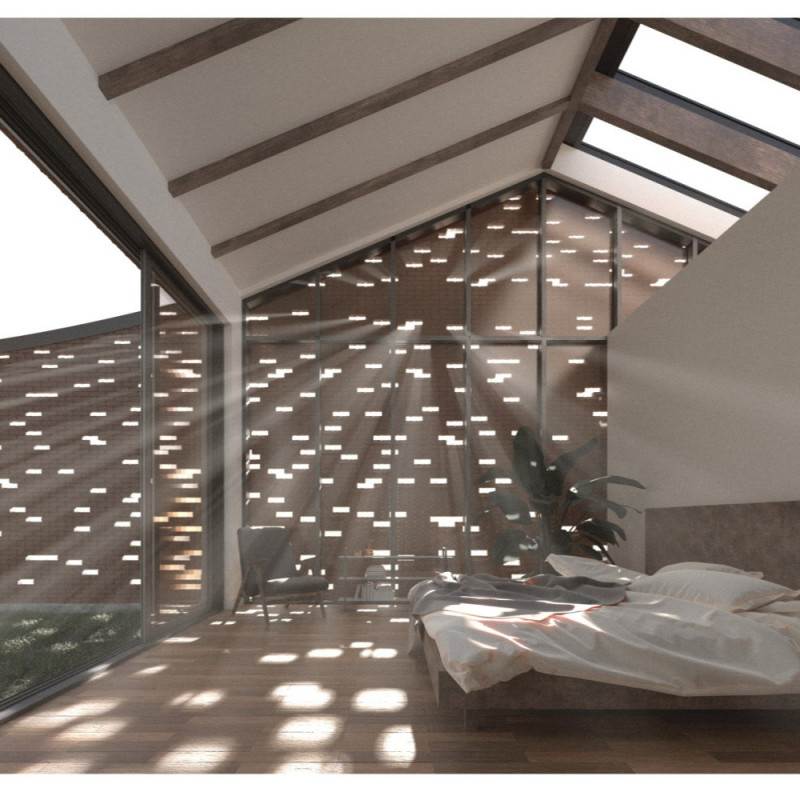5 key facts about this project
At its core, the Dapple House embodies a design philosophy that prioritizes light, space, and community engagement. The design integrates various elements that promote a seamless interaction between the indoor and outdoor environments, ensuring that each space within the home is bathed in natural light. This is particularly achieved through an innovative window placement that creates "dappled" light effects throughout the day, thus enhancing the experience of each room. The architectural design takes into account the sun's trajectory, ensuring that the home benefits from optimal daylighting conditions while creating a dynamic interplay of light and shadow.
Functionally, the Dapple House is divided into two distinct volumes that articulate the separation of private and public spaces. This arrangement not only maximizes privacy for the residents but also fosters open areas for social interaction. The ground floor is designed as a communal space, encouraging gatherings and fostering a sense of community, which is essential for the client. In contrast, private quarters are located on the upper level, ensuring a clear demarcation between social activities and personal retreats.
The architectural details of the Dapple House are noteworthy, particularly its material palette, which speaks to both durability and aesthetic appeal. Traditional brick is used extensively in the façade, creating a visual link to the local architectural language while also bringing warmth and texture to the exterior. The careful selection of materials extends indoors with exposed wooden beams and flooring, offering a tactile quality that enhances the inviting atmosphere. Additionally, expansive glass panels are strategically employed to facilitate unobstructed views of the surroundings, further connecting the interior spaces to nature and the urban landscape.
One of the unique design approaches seen in the Dapple House is its treatment of light and shadow. The architecture deliberately utilizes window configurations to create varying light conditions, allowing the spaces to evolve throughout the day. This dynamic use of light is coupled with an emphasis on landscape integration, where green spaces are thoughtfully incorporated into the design. The exterior not only functions as a boundary but also serves as a transition zone that invites nature into the living experience, enhancing the overall quality of life for the residents.
Sustainability is another key consideration in the Dapple House design. The project incorporates passive solar heating strategies and efficient insulation practices that reduce environmental impact while providing comfort to its inhabitants. This responsible approach to architecture ensures that the home meets modern sustainability standards without compromising on aesthetic quality or functionality.
In summary, the Dapple House is an architectural project that showcases an insightful approach to modern residential design. Its careful attention to materiality, innovative use of light, and respectful relationship with its urban context position this design as a model for future architectural endeavors. For those interested in a deeper exploration of the project, including its architectural plans, sections, and overall design concepts, further analysis and presentations are available that highlight its unique contributions to contemporary architecture.























